|
Have you read my novel Profusion? In my last bi-weekly email, I featured the no-see-um, a tiny insect that Bobby uses to try to stop a planet-threatening outbreak of terrifying creatures. Well, Bobby's plan also involves an aquatic animal, the sailfish. He chooses the sailfish because he knows it is one of the fastest swimming fish. So the sailfish is today's awesome animal. But what the heck is a sailfish. Sailfish are members of the billfish family (Istiophoridae), which also includes marlins. There are two subspecies (or separate species, depending on the source), the Atlantic Sailfish and the Indo-Pacific Sailfish. The sailfish's most striking features are the long, sharp bill (actually the upper jaw) and the tall, flat dorsal fin that stretches most of the length of the body. This dorsal fin is how the fish got its name, sailfish. Amazing facts about Sailfish Sailfish are fast! These are probably the fastest swimming fish on the planet, and many sources say they have been reliably clocked at about 68 miles per hour (110 kilometers per hour). However, some sources say more recent studies indicate they may only swim half that speed. Regardless, that's pretty darn fast when you consider they are moving through a dense liquid (water). Sailfish grow up to eleven feet long and weigh as much as 220 pounds. And they grow very fast, often reaching 4-5 feet in their first year. They are highly valued as game fish. But since their meat is tough and undesirable, they are almost always released alive after being caught. In fact, many places give out release certificates to fisherman who catch and release them. It is thought that the main purpose of the huge sail-like dorsal fin is to help "herd" schools of fish (or squid) during the sailfish's elaborate feeding strategy. Normally, these fins are held flat againt the fish's back and are hardly visible. Amazingly, sailfish cooperate with each other (sometimes dozens or even a hundred or more) to feed on schools of smaller "baitfish." They repeatedly swim around the school of baitfish, using their large fin to herd them into a tight ball, and then the sailfish take turns rushing into the ball of baitfish to slash at them with their long bills. This kills or stuns some of the baitfish and then the sailfish swallow them. This goes on and on until they get their fill. Check out this video of their feeding behavior. When they get excited or stressed, their skin flashes different iridescent colors. In fact, it is thought that they use these color flashes as they feed in cooperative groups. With numerous sailfish darting into the midst of a tight ball of baitfish to feed, it is possible another sailfish could get injured or killed by the attacker's sharp bill. But since they get excited just before dashing into the ball of fish, their skin changes color, warning the other sailfish to get out of the way. Sailfish are very widely distributed, and they are not currently endangered or threatened. The map below shows their overall range (although they are certainly more abundant in some of those areas). When spawning, a large female sailfish will release up to 4,500,000 eggs. Yeesh! Several males will follow her around as she spawns, releasing sperm into the water to fertilize the eggs. Check out this baby sailfish: So, the Sailfish deserves a place in the J.A.H.O.F. (Jake Animal Hall of Fame). FUN FACT: Jake is thought to have originated in North America in the early 1900s. It basically means satisfactory, as in "everything was jake again." It is also used in Australia, with variations such as jakealoo and jakerloo. So, in other words, jake is another way to say awesome. Photo Credits:
Sailfish mount - King Sailfish Mounts Sailfishing Jumping - Cape Verde Islands Sailfish with school of baitfish - Paul Nicklen, National Geographic Creative Sailfish Distribution Map - Florida Museum Baby Sailfish - Bob Cowen
0 Comments
My new novella, Parthenium's Year, is now available, and for a limited time you can grab it for 99¢ (the price will go up on November 10). It is also in Kindle Unlimited if you have access to that. I have to take a moment to tell you how excited I am about Parthenium's Year. This is the first book I have published that is not part of the Diffusion series, and I had a great time writing it. Parthenium's Year is a story of love. But as you probably know, I cannot write a book without some strange things happening. My stories are about ordinary people who find themselves in extraordinary circumstances. In Parthenium's Year, Spencer meets someone who changes his life. But she comes from a very unusual family. I live in Missouri, a state in the Midwest US that encompasses much of the area known as the Ozarks, where there is a rich history of fascinating traditions, folklore, art, and music. And in my own special way, Parthenium's Year expresses my love for this area. You can get Parthenium's Year on Amazon. As we get into the cooler weather of the fall, I start spending more time in Missouri's forests. Well, there's good and bad to that. If you've read any of my posts, you know I love being outdoors. But our forests here are not without hazards: ticks, chiggers, mosquitoes, no-see-ums, and my nemesis, poison ivy. If you don't have poison ivy where you live, consider yourself lucky. Yes, I know in some areas there are also venomous snakes, crocodiles, and large predators, but I don't fear those because they can be avoided with common-sense precautions. It's the little things that are more of a threat to me, the things that are much harder to avoid. For example, here's what my arm looks like right now, due to a recent encounter with poison ivy: I know, I know, you're tempted to say I can avoid such things by simply staying out of the woods. But that's not an option, because I feel a deep connection to nature and spending time in the woods (or in the water, or on the prairie, etc.) is essential to my peaceful and contented state of mind. And so this leads to today's Awesome Animal... the no-see-um. Have you read Profusion yet? If so, you know that the entire world is threatened by a profusion of horrifying creatures. Bobby makes a plan to try to stop it, and ironically his plan involves the smallest flying insect he can think of... the no-see-um. But what the heck is a no-see-um? No-see-ums are called different names in different parts of the world. They are actually a type of fly (the order Diptera), but they are much smaller than many other flies such as mosquitoes or deer flies. In fact, some of them are so small you simply cannot see them without a magnifier. So you don't know they are on your skin until you feel them biting you. That's how they got their name, no-see-um. Amazing facts about No-See-Ums Most of the insects people call no-see-ums are in a family of flies referred to as biting midges. Depending on where you're from, you may have heard them called midgies, knotts, moose flies, sand flies, punkies, or biting gnats. some of these names, though, like gnats and sand flies, are ambiguous because they are used for a number of other insect groups. Amazingly, there are 4,000 to 5,000 species of no-see-ums (biting midges) that we know of, and they live in almost every part of the world. They've even been found on Mount Everest! No-see-ums are so small they can fly right through typical screens on windows and doors. Whenever I purchase a tent, I make sure the windows are made of "no-see-um netting," a special type of netting with very small holes. In order to block no-see-ums, the netting must have mesh size of at least 4,900 holes per square inch! They also make head nets with the stuff: No-see-ums can drive a person crazy, because they bite! Like with mosquitoes, it is the females that bite. The females have a needle-like sucker along with a separate injector tube. The sucker is obviously for sucking up blood. The injector tube is used to inject a small amount of anticoagulant, to keep the blood from clotting so it will flow freely up the sucker tube. It is actually our body's allergic reaction to this anticoagulant that causes the itch. Some people are more allergic to it than others. Fortunately for me, the itch only lasts about 20 minutes, but for some people it can go on for several days or even weeks. Female no-see-ums seek out blood for the same reason female mosquitoes do--to get nourishment for the development of their eggs. Once she gets a blood meal, the female will lay her eggs on water or wet mud or sand (water is necessary for the larvae). For most species, the larvae feed for about 28 days before becoming adult no-see-ums (although it can take up to a year in some cold climates). A female can lay 400 or more eggs at a time, and she can breed 5-7 times in her adult life. No wonder these things can be so abundant! No-see-ums (along with gull midges) are the only pollinators of the cacao tree. So without them, we would have no chocolate. No-see-ums are drawn to mammals (including humans) by the odor of carbon dioxide (which we exhale) and the odor of lactic acid (which is made in our muscles and red blood cells). So this means that CO2 mosquito traps are also effective for no-see-ums. The real question is, if you can't see them, do they exist? So, the No-See-Um deserves a place in the V.G.A.H.O.F. (V.G. Animal Hall of Fame). FUN FACT: V.G. is an initialism for Very Good. Surprisingly, this abbreviation has been part of the English language since the 1860s. It showed up then in the Oxford English Dictionary, in a quote about a prison guard: “[he] was not in their [i.e. the prisoners’] opinion sufficiently liberal with his V.G.’s (‘Very Good,’ as marked in the accounts.)” So, in other words, V.G. is another way to say awesome. Photo Credits:
No-see-um Enlarged - Jarmo Holopainen Blood-filled midge - Wikimedia Commons Calvin and Hobbes - GoComics If you have read any of my novels, you know that Sago grubs are an important part of the diet of Papuan villagers (on the western half of the island of New Guinea, the Indonesian province of Papua). But what the heck is a sago grub? Sago grubs are actually the larvae of a large beetle called the Sago Palm Weevil, a species of snout beetle that feeds on the rotting trunks of the Sago Palm. These beetle larvae can be as fat as your finger. They may look disgusting to anyone who is not accustomed to eating insects, but they are packed with great nutrients and are said to be delicious. Amazing facts about Sago Grubs Sago grubs are considered a tasty treat throughout Indonesia, Vietnam, and Papua New Guinea. The people of some cultures like to eat them raw, and they describe the taste as creamy. Other people like to cook them, and the taste of the cooked grubs is described as resembling bacon or other meat. Of course sago grubs have varying significance for every culture that consumes them. New Guinea is home to hundreds of tribes with different customs, but the ritual of the sago grub feast is common throughout most of these tribes. The sago grub feast is a way to celebrate fertility and prosperity. Sago grub feasts are held at least once during the lifetime of each generation, and one feast can involve a sequence of events that goes on for many months. These feasts are a big deal, to say the least. The host tribe invites numerous guests, based on complex rules of genealogical relationships. These rituals often involve dancing, as well as exchanging valuable gifts such as pigs and shells (among other things). Check out this video of a sago grub feast in Papua. Harvesting sago grubs is amazingly difficult and time-consuming.Tribesmen cut down sago palms (not an easy task in itself). And they return to the fallen trees after 1 to 3 months to gather the Sago Palm weevil larvae (grubs) that have hatched in the trunk and have grown large by feeding on the rotting wood. Splitting open the rotting tree is labor-intensive and takes hours of hard work. If they wait too long to harvest the sago grubs, the larvae will mature and turn into adult Sago Palm Beetles, which are not desirable to eat. Not only are sago grubs tasty, and they play an important role in traditional rituals, but they are also extremely nutritious. Five large sago grubs (weighing about 40 grams total) will contain 3 grams of protein and as much as 12 grams of fat. Palm Weevil grubs have even shown up in hoax news reports. A newspaper in Italy ran a story (and the photo below) of firefighters in Naples finding a larva the size of a full-grown pig. According to the article, the creature let out a shrill cry, similar to the whinny of a horse. Imagine the feast you could have with that one! Of course this is fake. So, the Sago Grub deserves a place in the D.A.H.O.F. (Deevy Animal Hall of Fame). FUN FACT: Deevy is a word extracted from divvy, which in turn was extracted from divine. Deevy was used as early as 1900 (Elinor Glyn used it in her 1900 novel, Visits of Elizabeth). So, in other words, deevy is another way to say awesome. Photo Credits:
Sago Grub in hands - Sean Linnane Collecting Sago Grubs - Peter Menzel Adult Palm Weevil Beetle - Kal Muller Papuan child eating roasted sago grubs - Peter Menzel Giant Larvae Hoax - Musem of Hoaxes Wow, hard to believe, but it has been a month since my new novel, Profusion, was released! On Saturday (Sept. 30) I tried something I've never done before: a Book Release Party. Our local bookstore asked me if I wanted to do this. At first I was unsure, but then I thought, "Okay, why shouldn't I celebrate all those months of hard work?" So I decided to run with it and just have a good time. Trish and I came up with some activities and fun snacks. We had a scavenger hunt in the store. People searched for animals from the Diffusion series that were hiding among the books. By carefully considering the clues, they found the specific books, and therefore the animals. Our snacks were based on animals from the Diffusion books. For example, we had green tree pythons: And we had New Guinea Crocodiles (made with Nutter Butter cookies): And here are a few of the others: I know, I know. It's all very silly. But it gets worse. Because I told jokes. Really bad ones. Examples, you ask? What do you call a lazy baby tree kangaroo? A pouch potato. Tree kangaroos can jump higher than a house. Because houses can't jump. You know where kangaroos like to eat breakfast? At iHop. I did a 15-minute reading from Profusion, and I even did a ventriloquist act with my stuffed tree kangaroo, Tupela: Overall, it was terrific fun. But it involved a lot of preparation, so I'm not sure I'll try to do it again. But who knows? After completing my next book, I may be ready to celebrate all over again! |
Stan's Cogitations
Everyone needs a creative outlet. That's why I write. Archives
July 2024
|

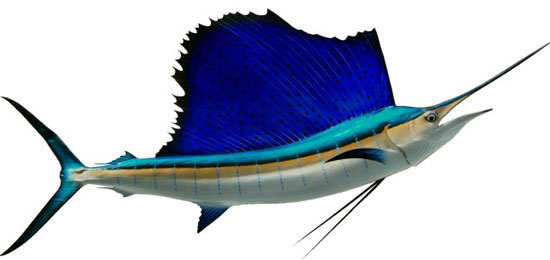
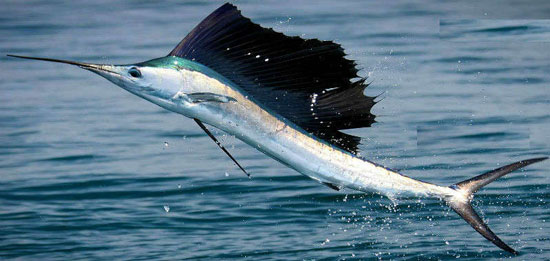
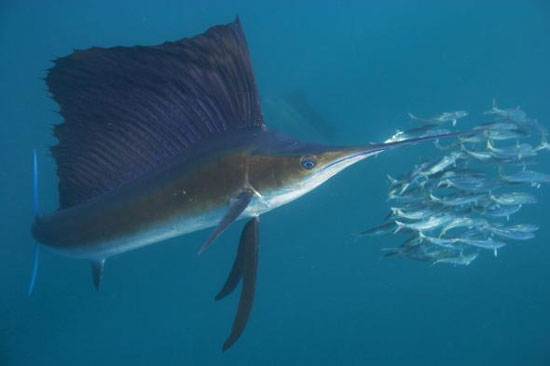
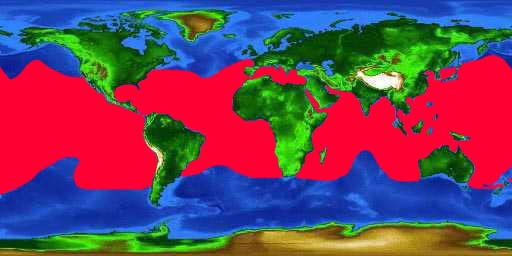



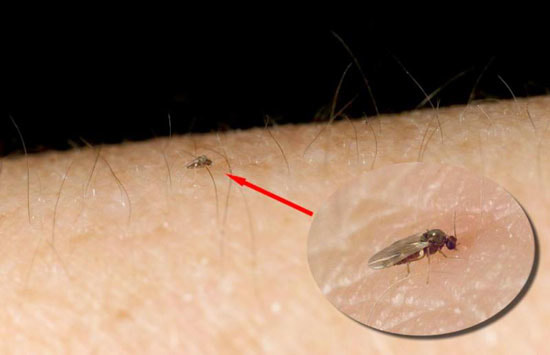
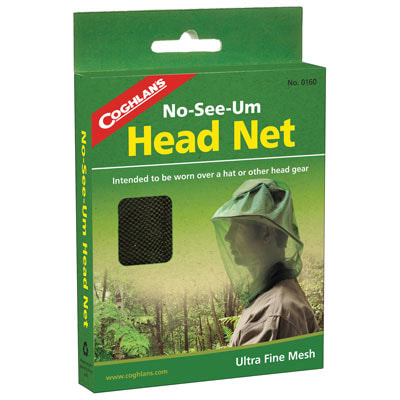


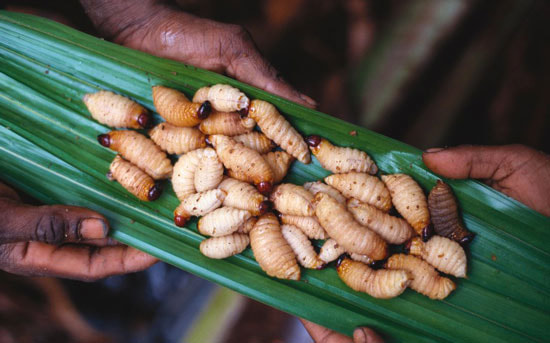
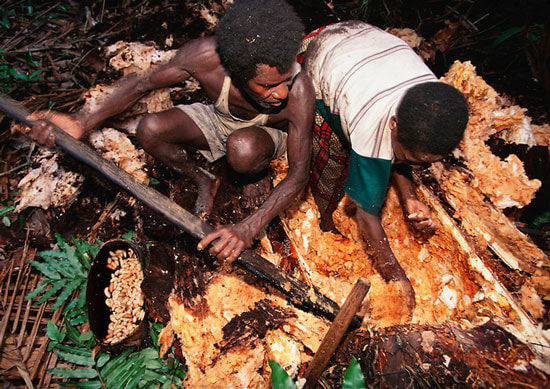
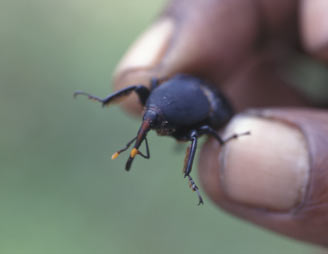


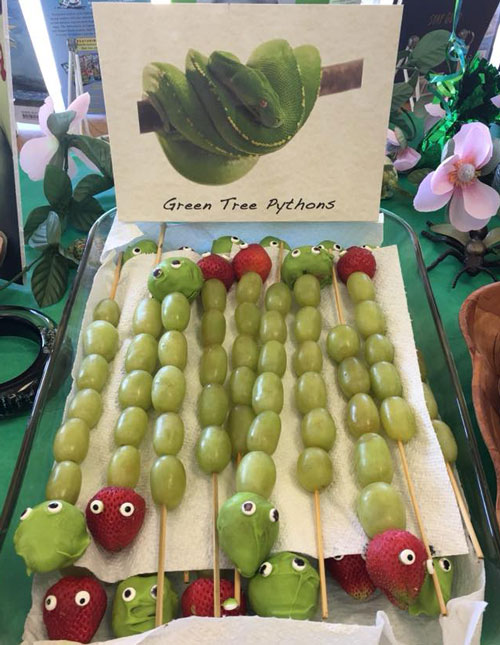
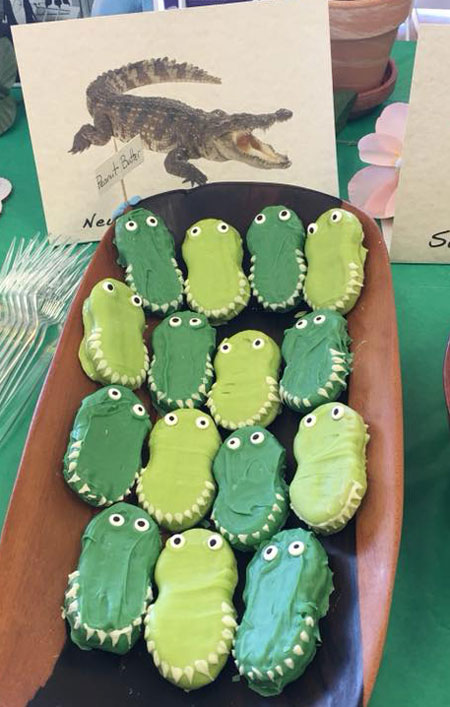
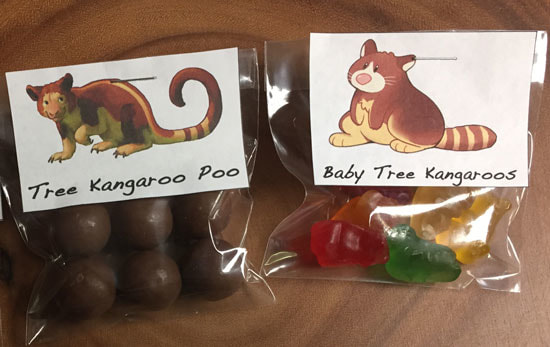


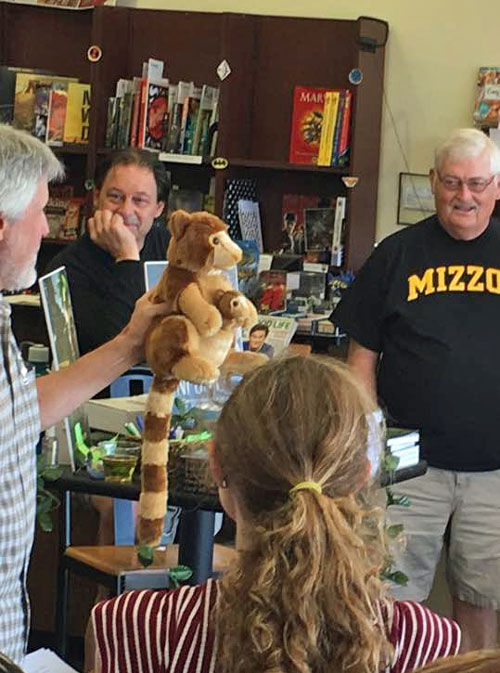
 RSS Feed
RSS Feed